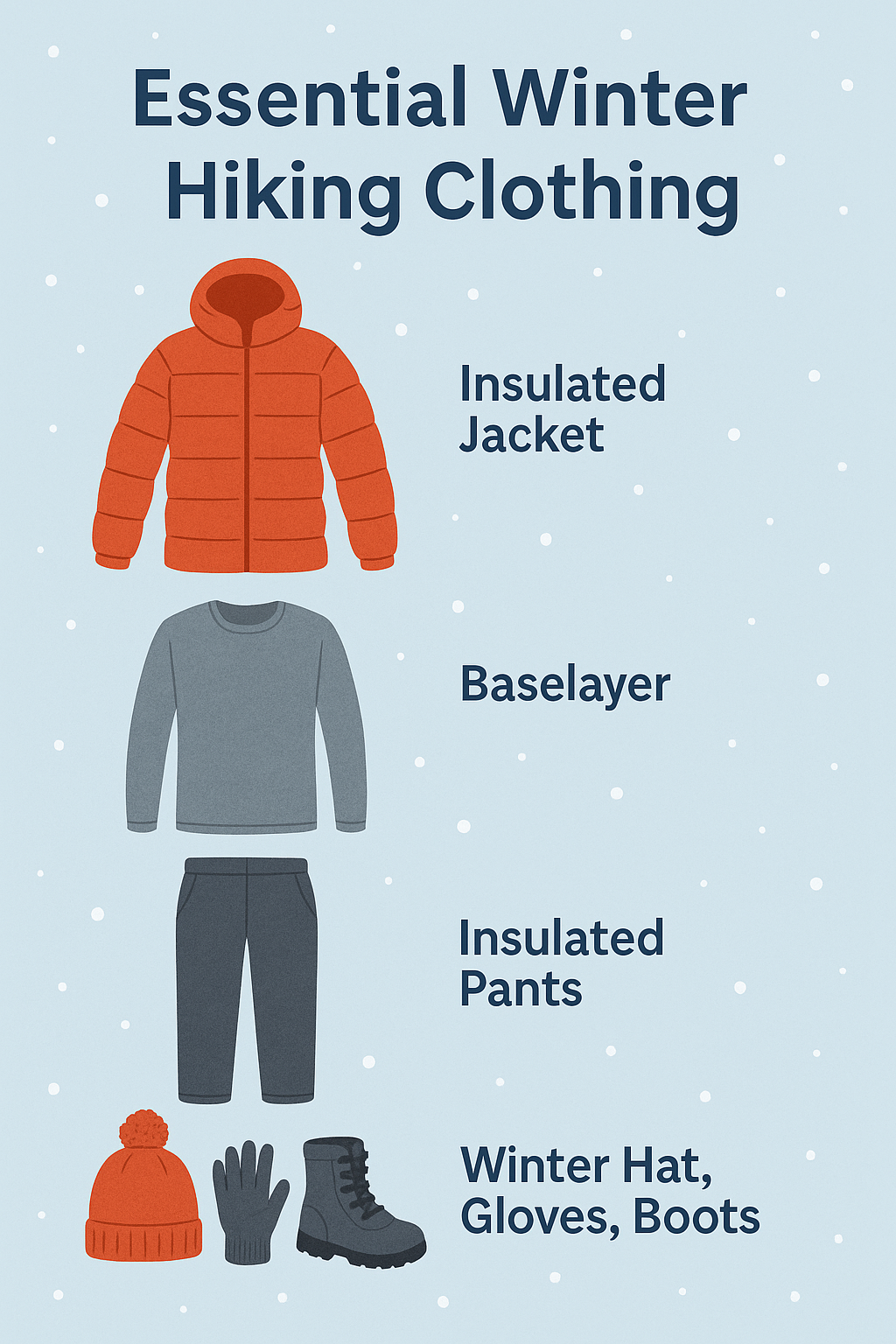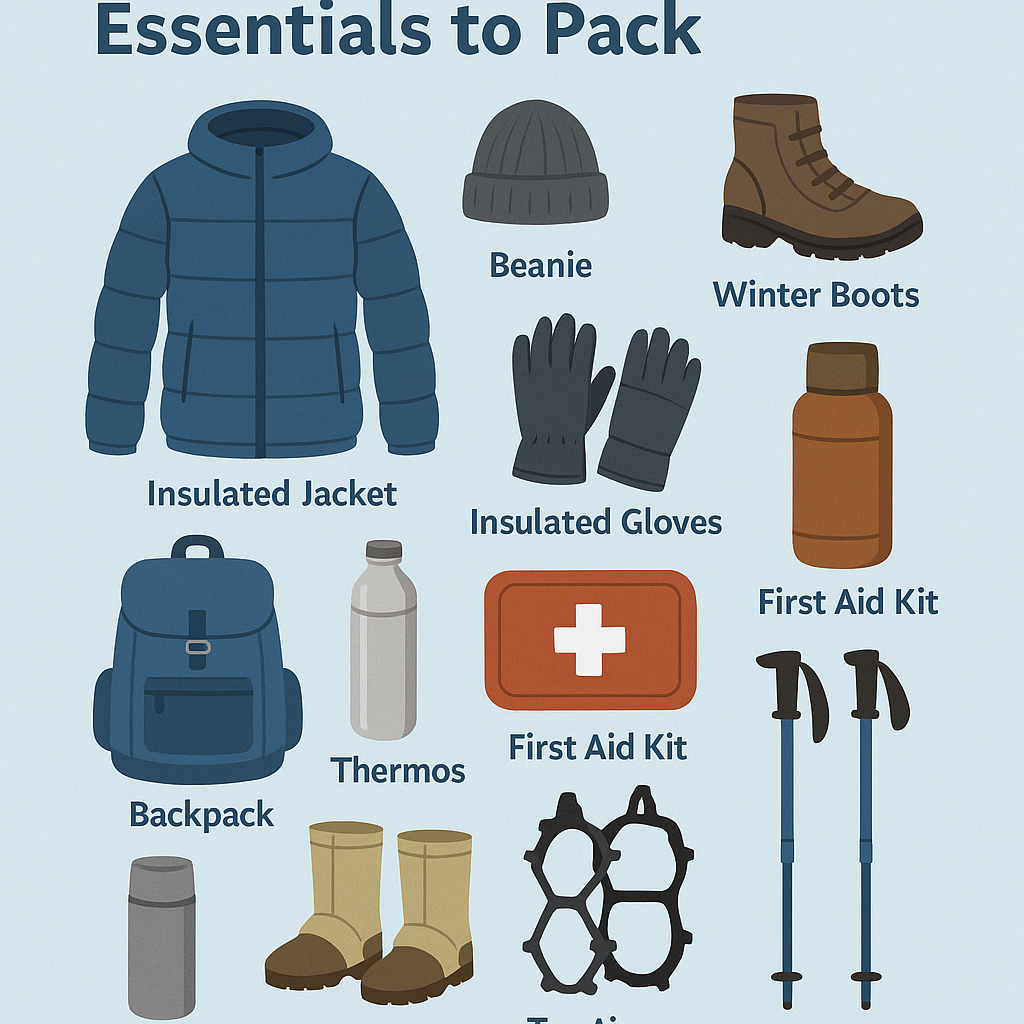Winter Hiking Must-Haves for Safety and Warmth
Hiking in winter opens up a quieter, more peaceful version of the outdoors—but it also brings unique risks. Snow, wind, and freezing temperatures can make even a short trail feel like a serious challenge. If you’re not prepared, it can quickly become dangerous.
Whether you're hiking snow-covered trails or icy ridgelines, this list of winter hiking must-haves will help you stay safe, warm, and ready for anything.
Essential Winter Hiking Clothing
1. Base Layer (Moisture-Wicking)
Start with a moisture-wicking base layer to keep sweat off your skin. Synthetic or merino wool is best—avoid cotton, which stays wet and makes you cold.
2. Insulating Layer (Warmth)
Fleece jackets, down vests, or synthetic puff layers trap heat and help regulate body temperature as conditions change.
3. Waterproof/Windproof Outer Layer
A good shell jacket and pants block wind and snow while keeping you dry. Look for breathable, lightweight options that allow movement.
4. Cold-Weather Accessories
Hat or beanie
Neck gaiter or balaclava
Waterproof gloves with liners
Wool socks (plus a backup pair)
Footwear and Traction Gear for Winter
Insulated Hiking Boots
Choose waterproof boots with solid ankle support and insulation. Your feet will stay warmer and more stable on snowy terrain.
Gaiters
Keep snow and debris out of your boots with tall gaiters—especially useful in deep snow or slushy trails.
Microspikes or Crampons
Ice can hide under snow. Add traction to your boots with microspikes or crampons to reduce the risk of slipping.
Trekking Poles (with Snow Baskets)
Poles improve balance and reduce stress on knees. In winter, use snow baskets so they don’t sink into deep snow.
Cold-Weather Hiking Essentials to Pack
Navigation Tools
Bring a map, compass, and GPS (don’t rely on your phone). Snow can cover trail markers or make paths hard to follow.
Headlamp with Extra Batteries
Winter days are short—always carry a light, even on short hikes. Cold weather drains batteries faster.
High-Calorie Snacks
Pack foods that are easy to eat and won’t freeze solid—nuts, granola bars, jerky, and nut butter pouches work well.
Hydration System (Insulated)
Use an insulated water bottle or hydration hose cover to prevent freezing. You still sweat in cold weather, so drink often.
Emergency Shelter and Gear
Emergency bivvy or space blanket
Fire starter (waterproof matches or lighter)
First aid kit
Multi-tool or knife
Whistle and backup communication
Tips for Staying Safe on the Trail
Check the weather and avalanche forecasts before heading out
Let someone know your route and return time
Don’t hike alone in remote areas unless you’re experienced
Start early—it gets dark fast
Know the signs of hypothermia and frostbite
Final Thoughts
Winter hiking offers a beautiful and rewarding way to explore the outdoors—but only if you're prepared. The right gear makes the difference between a memorable adventure and a risky situation. Dress in layers, pack for the worst-case scenario, and respect winter conditions.
Stay warm, hike smart, and enjoy the trail!


